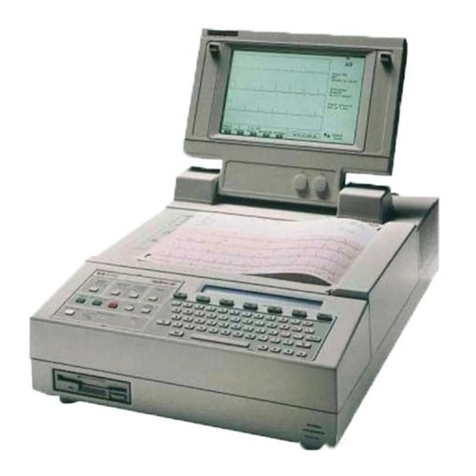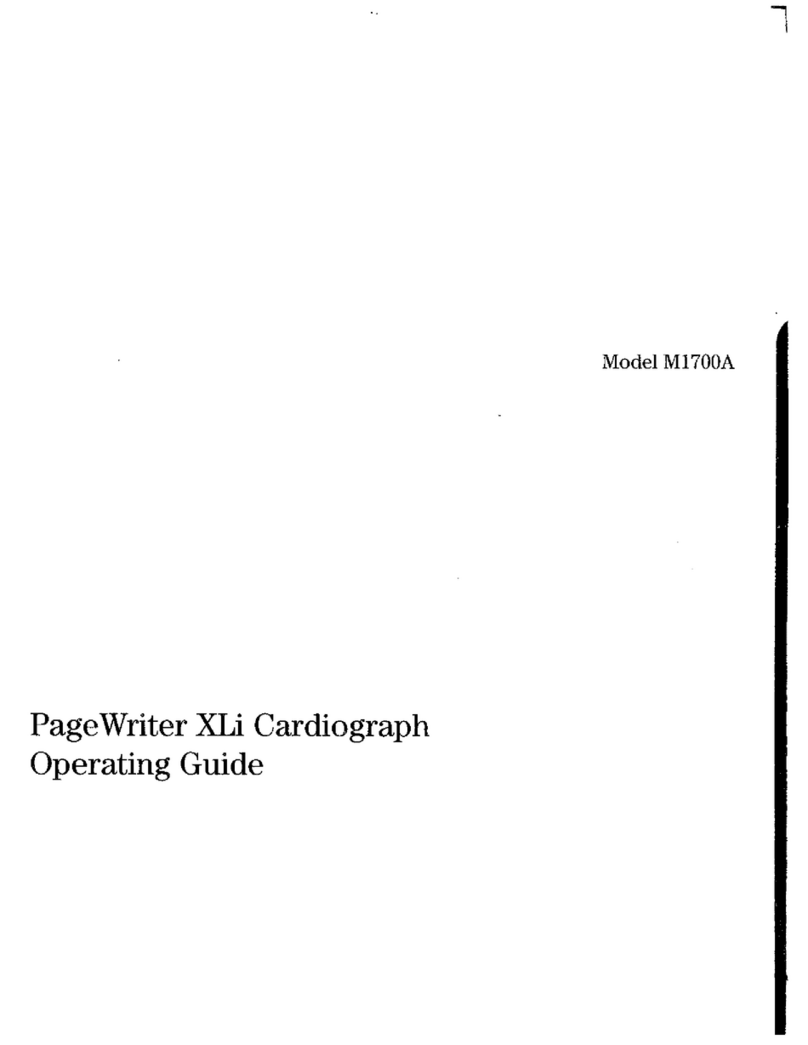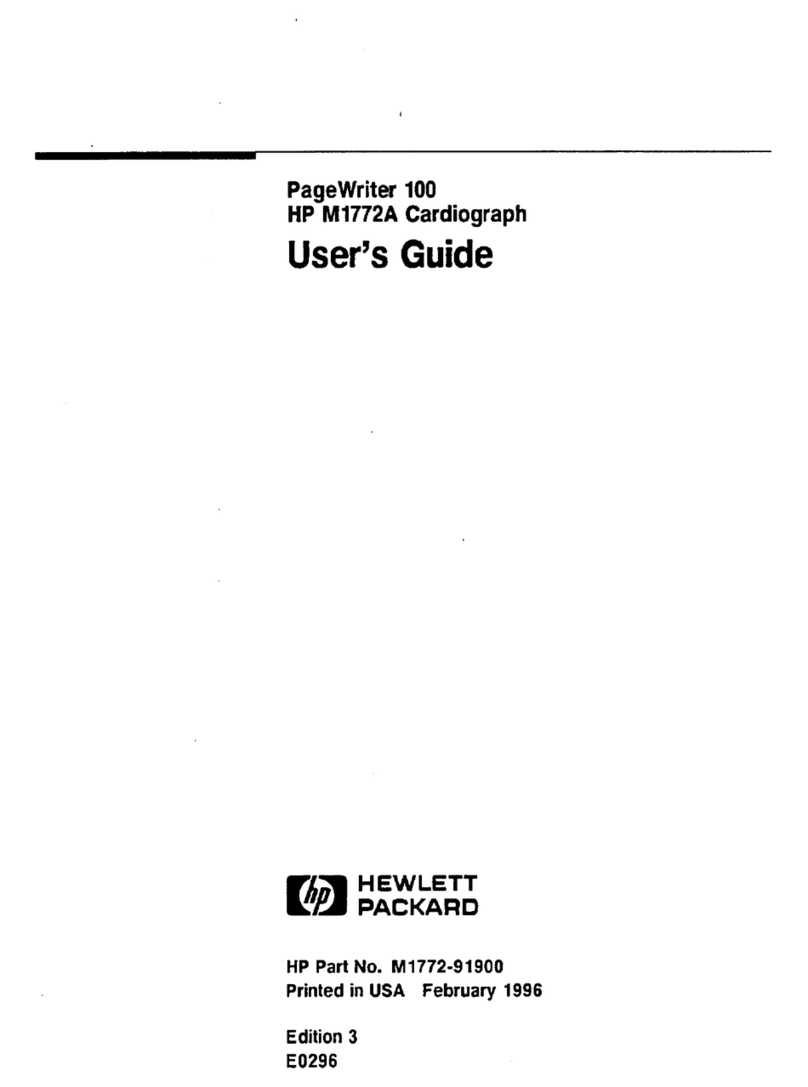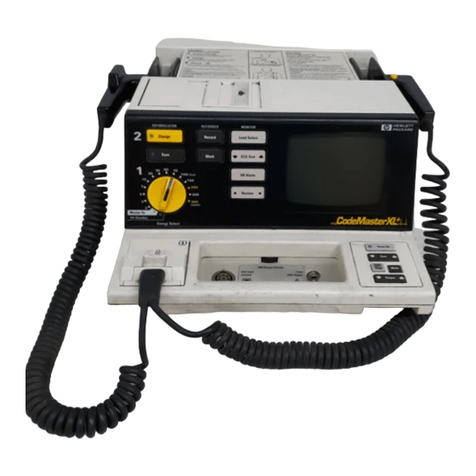
Preface
viii
0Preface
Introduction
This Preface provides general information which you should review before
using the HP M2475B CodeMaster 100 Portable Defibrillator/Monitor with
12-Lead ECG option.
About the HP Codemaster 100
The HP CodeMaster 100 is a portable, battery-powered
defibrillator/monitor with built in non-invasive pacing, pulse oximetry
(SpO2), and 3- or 5-wire ECG monitoring capability. It also offers an
optional Shock Advisory mode as well as an option to acquire a 12-lead
ECG. The Shock Advisory mode detects whether the rhythm is shockable
and guides the user through the process of defibrillation. It comes with an
Advisory Event Summary to simplify documentation. The 12-lead ECG
option allows users to acquire, store, and transmit 12-lead ECGs for help
with early detection of acute cardiac ischemia, acute myocardial infarction
and other arrhythmias.
The HP CodeMaster 100 is used as an advanced defibrillator/monitor in the
pre-hospital arena and as a transport defibrillator in the hospital
environment. It can be used with adult paddles, pediatric paddles, and multi-
function defib electrodes. Multi-function defib electrodes allow the user to
pace, monitor, and defibrillate from the same electrodes.
Theory of Defibrillator Operation
Defibrillation is a recognized means of terminating certain potentially fatal
arrhythmias, such as ventricular fibrillation and symptomatic ventricular
tachycardia. A direct current defibrillator applies a brief, high-energy pulse
of electricity to the heart muscle (up to 360 joules). The HP CodeMaster 100
delivers this energy through multi-function defib electrodes or paddles
applied to the patient’s chest. Delivery of this energy in the synchronized
mode is useful in treating supraventricular tachycardia, atrial fibrillation,
atrial flutter, and, in relatively stable patients, ventricular tachycardia.































